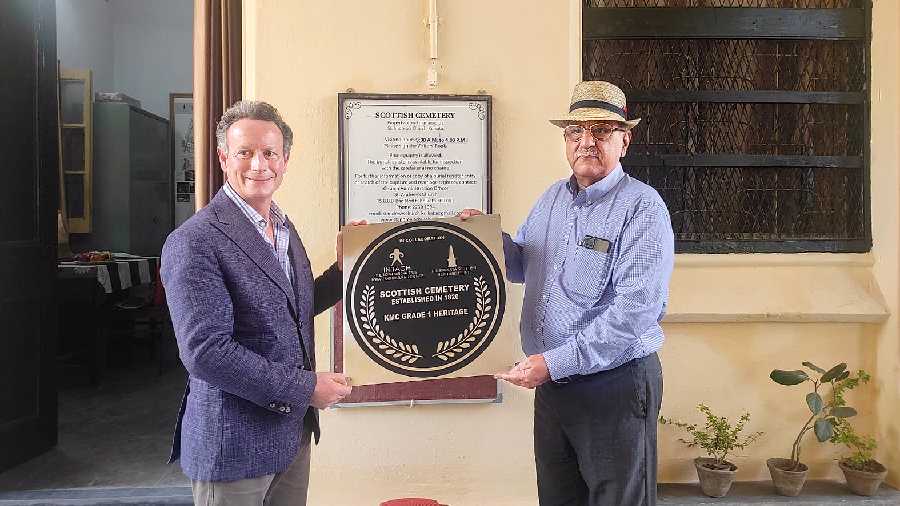The Scottish Cemetery near Mallickbazar has been awarded the heritage plaque by the Calcutta Scottish Heritage Trust and Indian National Trust for Art and Cultural Heritage (Intach).
More such buildings in the city related to Indo-Scottish heritage will be given the heritage plaque, said Lord Charles Bruce, chairman of the Calcutta Scottish Heritage Trust, who was at the cemetery on Saturday.
The Scottish cemetery was laid out in Kolkata from 1820 over an area of 3 acres and it contains 1809 headstones and monuments and around 4000 burials.
Although the cemetery continued to be in use after Independence, it fell into disrepair in the 1970s.
In 2008, the cemetery was restored by the Calcutta Scottish Heritage Trust of Scotland.
Till date, repair and renovation continues at the cemetery as and when funds are available.
Some of the tombstones have been restored by funds from the families whose relatives are buried here.
The project is run by a board of trustees operating as a registered Scottish Charity via an MoU with the site owner, St Andrews Church.
The trust raises funds from private donors, charitable trusts and foundations.
Inaugurating the plaque, G.M. Kapur of Intach said: “We were associated with the restoration of the cemetery right from the beginning. It was James Simpson who started. The significance of the project of restoration highlights the Indo-Scottish connection. We have a long connection with Scotland. The plaque commemorates that connection. And we hope that our association continues.”
Bruce said: “I would like to thank Intach for responding to the idea of giving a plaque to buildings and sites in the city that connect you with us. And within a week, we identified 40 buildings and then we had to narrow it down to 10. They cover all aspects of life in the city, Howrah station, Scottish cemetery, buildings connected to the jute industry and all industrial and commercial activities that the city once represented as one of the most important urban place in India.
“Kolkata is the first global city in Asia. There is not just a British and a Scottish connection. The city has a French connection, a Dutch connection, a Danish connection, all of which have been supported by the constituent governments. This project, however, is supported by ordinary people in Scotland. There has been no government support at all and I think this is because of the link between people. The attempt here is not just to conserve our heritage but to open up the site for everyone.”
The cemetery’s urban parkland not only acts as a green lung but also has become a little oasis of bio-diverse species both floral and fauna.
Since it is surrounded by neglected urban precinct populated by underprivileged families, the project proposes to continue with community development in the neighbourhood.
Talking about the restoration, project architect Neeta Das said: “The Scottish cemetery is an important repository of memory containing thousands of burial records.”
After the plaque was inaugurated, a fete was held by the children of the community who put up stalls of food and plants on the cemetery ground.
